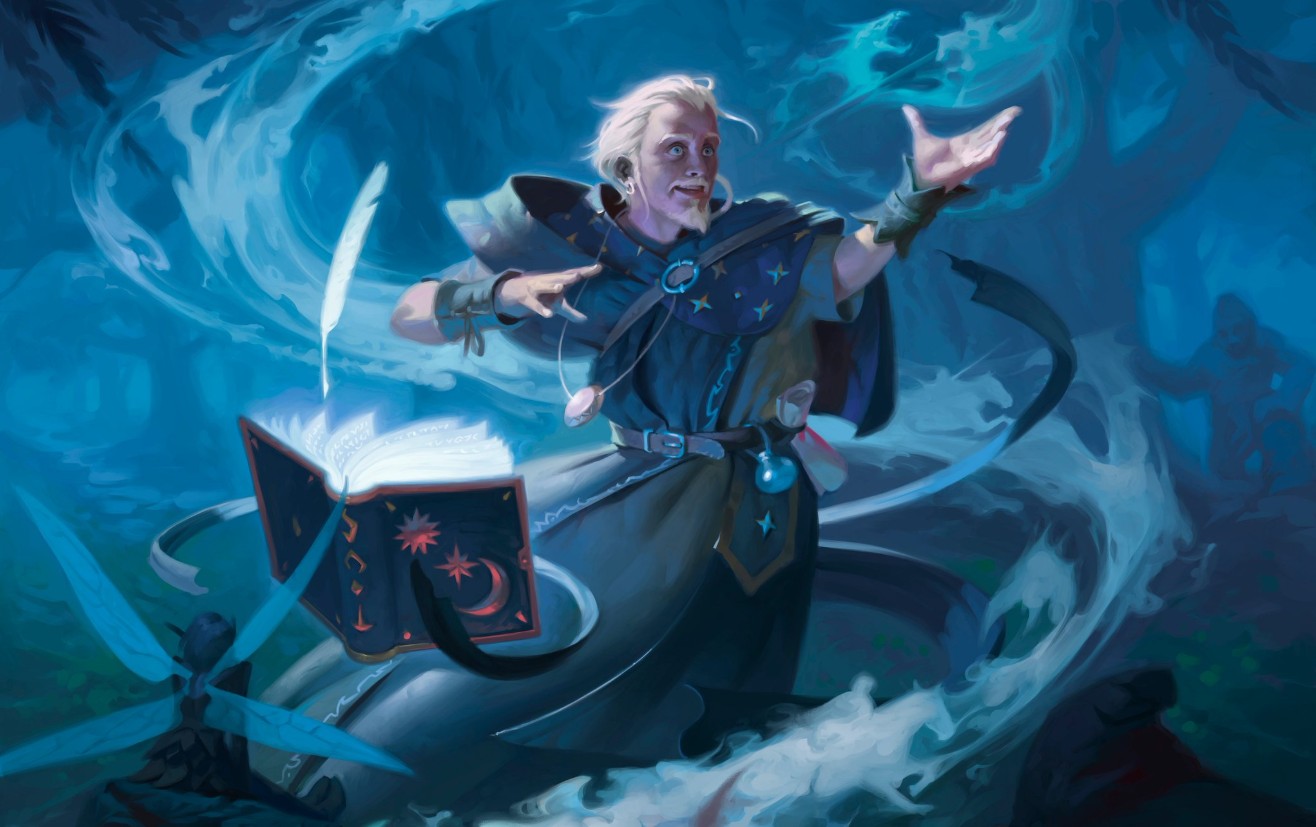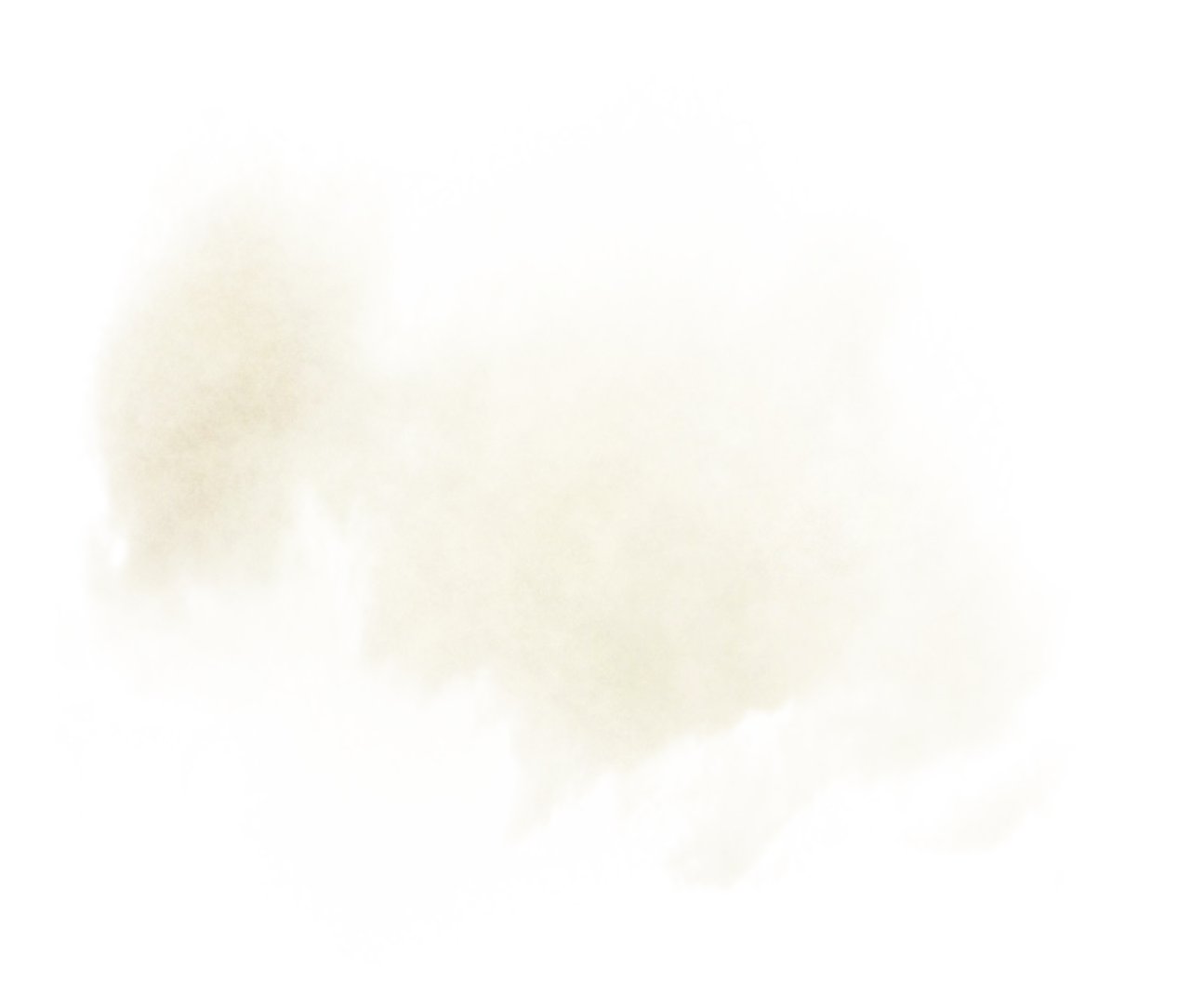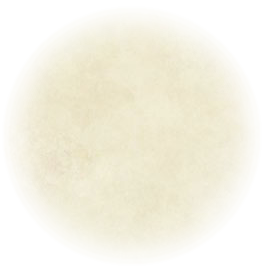

Skeeve Vistious is a famous illusionist, who we are required to state is a Halfling, and certainly not two cats in a trench coat. Again, we our lawyers require us to repeat that Skeeve Vistious is a powerful wizard not two cats stacked on top of each other. However, this researcher hasn't spent his entire life in a wizard tower. Tales of dragons, demons, and even a lich all surround this man.
Compiled here are some notes from his manuscript, the ones that weren't invisible, of course. Not all powers and feats will work in your campaign. Use these at your own discretion.













School of Illusion
The School of Illusion in the Player's Handbook is about wizards growing more powerful in their expertise of Illusions. Below there are re-writes of the Illusionist wizard features, with bolded text to outline changes or additions, or notes where the feat is substitute for the original.
Improved Minor Illusion
When you choose this school at 2nd level, you learn the Minor Illusion cantrip. If you already know this cantrip, you learn a different wizard cantrip of your choice. The cantrip doesn't count against your number of cantrips known.
When you cast Minor Illusion, you can create both a sound and an image with a single casting of the spell.
At 10th level, you can cast Minor Illusion without using somantic or material components
Maluble Illusions
Starting at 6th level, when you cast an illusion spell that has a duration of 1 minute or longer, you can use your action to change the nature of that illusion (using the spell's normal parameters for the illusion), provided that you can see or are concentrating on the illusion.
Illusory Smoke
10th level School of Illusion Wizard feature, which replaces Illusory Self feature
Everything you cast contains a bit of illusory smoke; leftover deceit you've learned to manipulate. It splashes out from your other spells, effecting creatures minds. When you hit a creature with a spell attack roll or force one creature to make a saving throw, you can choose a target within 60 feet to wrap the smoke around (you can choose yourself).
Choose one:
- The target grows translucent to the creature's eyes. The creature has disadvantage on attacks against the target until the end of your next turn.
- The target grows larger and scarier. The creature has advantage on attack rolls against the target until the end of their next turn.
You can do this a number of times equal to your Intelligence Modifier. You can regain one use on a short rest.
Illusionist Feats
Illusory Self
You've learned to weave illusions around yourself for defense.
- You can create an illusory duplicate of yourself as an instant, almost instinctual reaction to danger. When a creature makes an attack roll against you, you can use your reaction to interpose the illusory duplicate between the attacker and yourself. The attack automatically misses you, then the illusion dissipates. You can use this ability a number of times equal to half your Proficiency Bonus (rounded down). You regain all uses on a long rest.
- Increase your Intelligence, Wisdom, or Charisma score by 1, to a maximum of 20.
Temporary Truth
Prerequisite: The ability to cast at least one illusion spell
Your skill at manipulating illusions has grown enough to allow you to fool anyone.
When you cast an illusion spell, you can, for less than an instant, make the spell conjuration instead. If a creature effected by the spell would automatically succeed their save or see through the illusion, that ability is ignored and the creature must make the save as normal or perceives the illusion as normal. If a creature fails the save, it cannot automatically save against or see through any illusion spell until it succeeds the save or Intelligence(Investigation) check for the original illusion, another illusion, or after 1 hour (whichever is first); at which point the creature automatically saves and against illusions it normally would.
Once you use this ability you cannot use it again until you take a short or long rest.
New Spells
The following are spells that can be integral to a Illusionist's repertoire.
Basic Illusion
1st-level illusion
- Casting Time: 1 action
- Range: 60 feet
- Components: V, S, M (a bit of fleece)
- Duration: Concentration, up to 1 minute
You create the image of an object, a creature, or some other visible phenomenon that is no larger than four 5 foot cubes. The image appears at a spot that you can see within range and lasts for the duration. It can make sound, and the volume can range from a whisper to a scream. You can't create a sound loud enough to deal thunder damage or deafen a creature.
As long as you are within range of the illusion, you can use your action to cause the image to move to any other spot within range. As the image changes location, you can alter its appearance so that its movements appear natural for the image. For example, if you create an image of a creature and move it, you can alter the image so that it appears to be walking. Similarly, you can cause the illusion to make different sounds at different times, even making it carry on a conversation, for example.
Physical interaction with the image reveals it to be an illusion, because things can pass through it. A creature that uses its action to examine the image can determine that it is an illusion with a successful Intelligence(Investigation) check against your spell save DC. If a creature discerns the illusion
Spells
| Level | Spell | School(s) | Conc. | Ritual | Class |
|---|---|---|---|---|---|
| 1st | Basic Illusion | Illusion | yes | no | Artificer, Bard, Sorcerer, Wizard |
| 1st | Blocking | Illusion | yes | no | Bard, Ranger, Wizard |
| 3rd | Continual Illusion | Illusion | no | no | Artificer, Druid, Cleric, Wizard |
| 5th | Skeeve's Illusory Path | Illusion | yes | no | Bard, Druid, Ranger, Sorcerer, Warlock, Wizard |
| 5th | Skeeve's Uncertain Position | Illusion | no | no | Bard, Sorcerer, Warlock, Wizard |
| 6th | Hallucinatory Arena | Illusion | yes | yes | Bard, Druid, Warlock, Wizard |
| 7th | Mass Phantasmal Force | Illusion | yes | no | Bard, Sorcerer, Wizard |
| 7th | Skeeve's Superposition | Conjuration | no | no | Bard, Warlock, Wizard |
| 9th | Mass Greater Invisibilty | Illusion | yes | no | Bard, Sorcerer, Wizard |
| 9th | Wonderland | Illusion | yes | no | Warlock, Wizard |
for what it is, the creature can see through the image, and its other sensory qualities become faint to the creature.
Blocking
1st-level illusion
- Casting Time: 1 action
- Range: 20 feet
- Components: S, M (rough sand, which the spell consumes)
- Duration: Concentration, up to 1 minute
You make yourself and whatever you are carrying when the spell is cast invisible to one creature of your choice within range. Target creature in range makes a Wisdom Saving throw. Upon a failure, the creature cannot observe you as long as you are concentrating on the spell.
A creature cannot see your subtle interactions on the world, like footprints or hand smudges. However, it can see an object float if you are to pick up something new, and can deduce that something invisible is around it. If you attack it, you become visible to it again and the spell ends.
Continual Illusion
3rd-level illusion
- Casting Time: 2 hours
- Range: Touch
- Components: V, S, M (sapphire worth at least 5 gp, which the spell consumes)
- Duration: Until Dispelled
You create the image of an object or a other visible phenomenon that is no larger than two connected 5 foot cubes. The image appears at a spot within range. The image is purely visual; it isn't accompanied by sound, smell, or other sensory effects. The image does not move or make noise, only responding to one physical stimuli with movement and sound, which you choose during casting. An example would be a banner that only waves when the wind is blowing hard.
Physical interaction with the image reveals it to be an illusion, because things can pass through it. A creature that uses its action to examine the image can determine that it is an illusion with a successful Intelligence (Investigation) check against your spell save DC. If a creature discerns the illusion for what it is, the creature can see through the image, and any noise it makes sounds hollow to the creature.
Hallucinatory Arena
6th-level illusion (ritual)
- Casting Time: 1 action
- Range: 200 feet
- Components: V, S, M (stone from a brick)
- Duration: Concentration, up to 1 minute
You make natural or manmade terrain in a 100-foot cube in range look, sound, and smell like some other sort of natural or manmade terrain. Thus, open fields or a road can be made to resemble a swamp, hill, crevasse, town, road, or other difficult or impassable terrain. You can create violent traps like barbed wire, thorny hedges, or pools of poison. If a creature interacts with a trap by moving into the space, they take 6d6 psychic damage. Manufactured structures and equipment within the area can also change in appearance, including becoming invisible.
The tactile characteristics of the terrain are unchanged, so creatures entering the area are possible to see through the illusion. If the difference isn't obvious by touch, a creature carefully examining the illusion can attempt an Intelligence (Investigation) check against your spell save DC to disbelieve it. A creature is unaffected by this spell if it can't see, if it relies on senses other than sight, such as blindsight, or if it can perceive illusions as false, as with truesight. A creature who discerns the illusion for what it is, sees it as a vague image superimposed on the terrain, unless that part of the terrain has been made invisible. These creatures do not take psychic damage from the spell either.
Mass Greater Invisibility
9th-level illusion
- Casting Time: 1 action
- Range: 30 feet
- Components: V, S
- Duration: Concentration, up to 1 minute
Up to ten willing creatures of your choice that you can see within range become invisible until the spell ends. Anything each target is wearing or carrying is invisible as long as it is on a target's person.
Mass Phantasmal Force
7th-level illusion
- Casting Time: 1 action
- Range: 120 feet
- Components: V, S, M (a bit of fleece)
- Duration: Concentration, up to 1 minute
You craft an illusion that takes root in the mind of up to six targets that you can see within range. Each target must make an Intelligence saving throw. On a failed save, you create a phantasmal scene made up of objects, creature, or other visible phenomenon of your choice that is no larger than a 50-foot cube and that is perceivable only to the target for the duration. This spell has no effect on undead or constructs.
The phantasm includes sound, temperature, and other stimuli, also evident only to the targets.
Each targets can use their action to examine the phantasm with an Intelligence (Investigation) check against your spell save DC. If the check succeeds, the target realizes that the phantasm is an illusion, and can see through it as a transparent image or superimposed if the image is on an object.
While each target is affected by the spell, the targets treat the phantasm as if it were real. The targets rationalizes any illogical outcomes from interacting with the phantasm. For example, a target attempting to walk across a phantasmal bridge that spans a chasm falls once it steps onto the bridge. If the target survives the fall, it still believes that the bridge exists and comes up with some other explanation for its fall: it was pushed, it slipped, or a strong wind might have knocked it off.
Affected targets are so convinced of the phantasm's reality that it can even take damage from the illusion. A phantasm created to appear as a creature can attack the target. Similarly, a phantasm created to appear as fire, a pool of acid, or lava can burn the target. Each round on your turn, the phantasm can deal 6d6 psychic damage to the target if it is in the phantasm's area or within 5 feet of the phantasm, provided that the illusion is of a creature or hazard that could logically deal damage, such as by attacking. The target perceives the damage as a type appropriate to the illusion.
At Higher Levels. When you cast this spell using a spell slot of 8th level or higher, you can target one additional creature for each slot above 7th.
Skeeve's Illusory Path
5th-level illusion
- Casting Time: 1 action
- Range: 120 feet
- Components: V, S, M (a piece of a yellow masonry)
- Duration: Concentration, up to 1 minute
You create a specific path people must follow. Up to 6 creatures of your choice in a 15-foot-radius sphere makes an Intelligence save. On a failed save, the target must follow the path when attempting to move somewhere, and sees that anywhere that isn't on the path as dangerous, such as a large drop, lava, or acid (your choice). At the end of the creature's turn, they make another Intelligence save. On a successful save, they see through the illusion, and can move unimpeded.
The path is composed of 24 5-foot panels. Each panel must be contiguous with at least one other panel. A creature can jump from one panel to another. If a creature steps off the path, either by being forced off or by going off voluntarily, the creature takes 8d6 psychic damage and the spell's effect on them ends.
At Higher Levels. When you cast this spell using a spell slot of 7th level or higher, the spell's effect does not does not end when the creature takes psychic damage, so long as the illusion permits. (Example: a void would cause the spell to drop as the creature would take damage when it thinks it hits the bottom, but an acid pool would not drop)
Skeeve's Superposition
7th-level conjuration
- Casting Time: 1 action
- Range: Self
- Components: V, S, M (some cat hair)
- Duration: 1 hour
Four illusory duplicates of yourself appear in your space. You disappear, split amongst the duplicates. Until the spell ends, the duplicates act on their own, but may not take their own actions. When you use your movement, you can move your illusory doubles up your speed. You can use your action to dismiss the illusory duplicates and return in one of their places.
You are simultaneously in the location of all duplicates and/or none of the duplicates at the same time, constantly flickering between all points of existence. If an area of effect affects you or a duplicate while in range, you count as in range or out of range, your choice. If all your duplicates are in range of an area of effect or are all targeted by a spell, you must make the save or be effected by the spell. You can take actions from the location of any duplicate.
A duplicate's AC is equal to yours and can be targeted separately by attacks. If the damage dealt to a duplicate from an attack is equal to 1/4 your health, the duplicate disappears. A duplicate can only take damage if it is targeted by an attack or is in an area of effect that targets all duplicates. It ignores all other damage and effects. The spell ends when all three duplicates are destroyed. If a duplicate is not within 120 ft of another duplicate or you, then it is destroyed at the end of your turn.
If a creature relies on senses other than sight, such as blindsight, it detects you bouncing in and out of existence. If a creature can perceive illusions as false, as with truesight, it perceives your duplicates as shimmering. When only one duplicate remains, you return to one body and the spell ends. If all duplicates are destroyed at once, choose one body that remains. Your soul does not return to that body until the end of your next turn.
Skeeve's Uncertian Position
5th-level illusion
- Casting Time: 1 action
- Range: Self
- Components: S
- Duration: 1 minute
Three illusory duplicates of yourself appear in your space. Until the spell ends, the duplicates mimic your actions, or appear to take the dodge action, so it's impossible to track which image is real. When you use your movement, you can move your illusory doubles up your speed. You can use your action to dismiss the illusory duplicates.
Each time a creature hits you with an attack during the spell's duration, roll a d20 to determine if you teleport away. If you have three duplicates, you must roll a 6 or higher to to have never been there. With two duplicates, you must roll an 8 or higher. With one duplicate, you must roll an 11 or higher. If you roll higher, then a duplicate takes the blow instead, and you teleport to the position of a random duplicate.
A duplicate's AC equals 10 + your Dexterity modifier and can be targeted separately by attacks. If an attack hits a duplicate, the duplicate is destroyed. A duplicate can be destroyed only by an attack that hits it. It ignores all other damage and effects. The spell ends when all three duplicates are destroyed. If a duplicate is not within 30 ft of another duplicate or you, then it is destroyed at the end of your turn.
A creature is unaffected by this spell if it can't see, if it relies on senses other than sight, such as blindsight, or if it can perceive illusions as false, as with truesight. A creature that uses its action to examine a duplicate and can determine that it is an illusion with a successful Intelligence (Investigation) check against your spell save DC.
Wonderland
9th-level illusion
- Casting Time: 1 minute
- Range: Touch
- Components: V, S, M (A small glass dome filled with water with a vellum depiction or a carved statuette in the likeness of the target, worth at least 500 gp per Hit Die of the target)
- Duration: Concentration for 1 minute until target is touched, after which the spell lasts Until Dispelled
You banish a creature that you touch into a demiplane formed from their deepest wanton desire. The demiplane creates real objects if the target attempts to interact with the world, and will generate new information based as closely to the real world as possible. The Creature can attempt to escape once per day. When it does so, it makes a Intelligence check versus the caster's save DC.
If it succeeds there is a distant chiming of bells, regardless of where it is. After the third successful check ever, it escapes and the spell ends. Upon a successful escape or dispelling of the spell, the glass dome shatters and the the target reappears on top of it. While the spell is active, the sphere is immune to all damage and cannot be broken by any means.
A dispel magic spell can end the spell only if it is cast as a 9th-level spell, targeting the special component used to create it.
Magic Items
Eversmoking Bottle of Illusion
Wondrous item, rare
Smoke leaks from the lead-stoppered mouth of this brass bottle, which weighs 1 pound. You can mutter a description into the bottle as a free action. The description is constrained under the rules of Silent Image but with very limited and quietly subtle sound. When you use an Action to remove the stopper, a cloud of thick smoke pours out in a 60-foot radius from the bottle. The cloud's area is heavily obscured. Each minute the bottle remains open and within the cloud, the radius increases by 10 feet until it reaches its maximum radius of 120 feet. Shadowy versions of the illusion is seen through the mist. The shadows move away if approached, vanishing upon impact.
The cloud and illusion persists as long as the bottle is open. Closing the bottle requires you to speak its Command word as an Action. Once the bottle is closed, the cloud disperses after 10 minutes and the illusions stop immediately. A moderate wind (11 to 20 miles per hour) can also disperse the smoke after 1 minute, and a Strong Wind (21 or more miles per hour) can do so after 1 round.
Eldritch Invocation Options
When you choose eldritch invocations, you have access to these additional options.
Eldritch Veil
Prerequisite: 9th level
You can cast Blocking at will without expending a spell slot or material components. On your following turns, you can use your action to extend the spell onto another creature within 15 feet. The creature does not make a saving throw. You can have a number of creatures under this spell equal to your proficiency bonus.
The strength of the Illusion is details. Conjuration summons smooth uninteresting objects. Transmutation is limited by the original. And sooner or later, every creature will figure out it has been Enchanted. But nothing is like the power of the Illusion. Total belief from all that matters: The details.